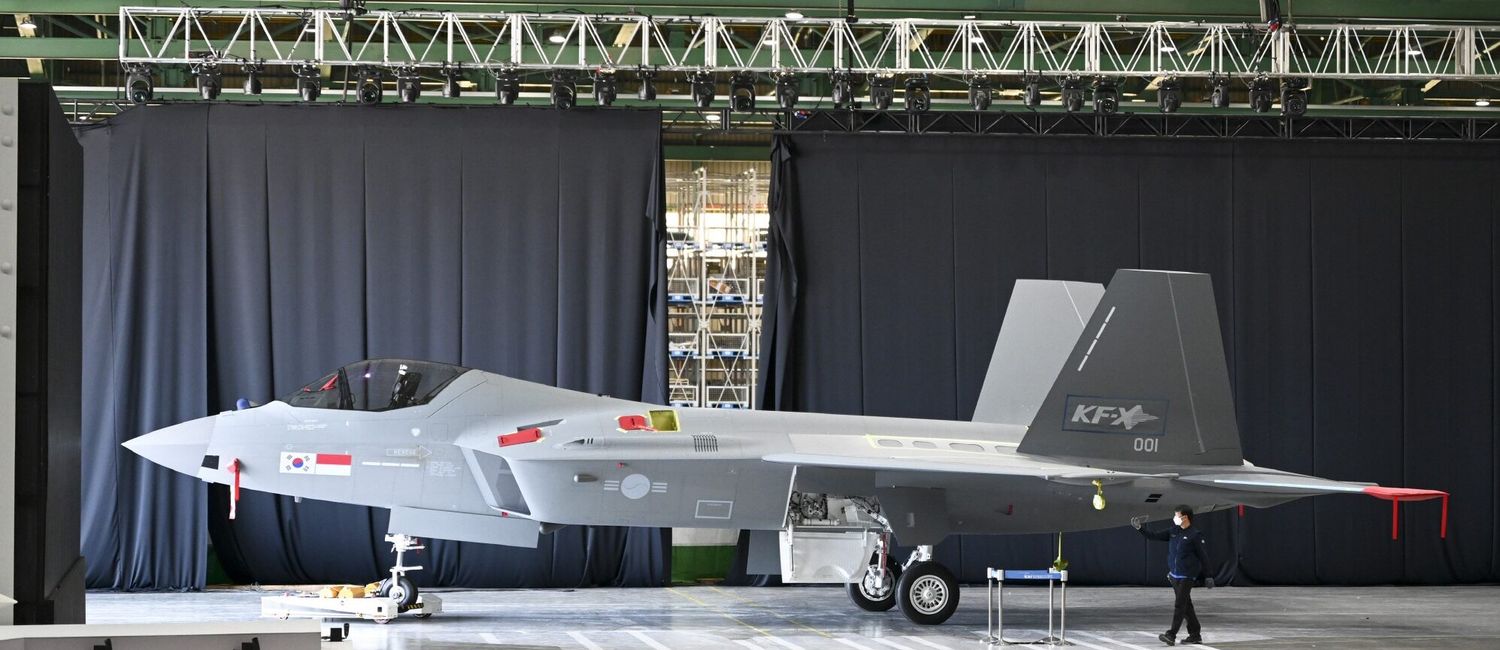KF-21 Boramae news: Indonesia remains in the program and «stealth» paint is ready
During 2020, the development of the radar energy absorbing material (RAM) coating, or national stealth paint, was completed and will begin to be applied to the KF-21 Boramae prototypes.
Although the Boramae (whose rollout was in April) looks like a younger sibling of the F-22 Raptor, it is not yet a 5th generation fighter but it is on its way to becoming one. One of the necessary characteristics to be considered as an aircraft belonging to this category is to have a low radar cross signature (RCS).

To achieve this, the surfaces must be carefully designed to refract radar waves away from the enemy emitter (this is why stealth fighters resemble each other), have internal weapons bays, build the airframe with as few metals as possible (metal has strong radar reflective properties) and coat the aircraft with materials or paint types that have the ability to absorb the energy of radar waves.
The KF-21 program was designed to meet all these requirements in an evolutionary manner, the first step being the general design of the aircraft, and the second, the RAM paint, which is now ready to be applied.
According to the Korean website dongA.com, the RAM paint was completed last year and its performance was tested on parts of the structures built for the KF-21 prototypes.
KAI, the manufacturer of the KF-21, reportedly contracted a local company to develop the stealth paint that will be applied to the various prototypes, which will perform more than 2,200 test flights over 4 years, after completing ground tests.

The paint applied to the surface of the fuselage is one of the core technologies of stealth aircraft. The reason why the authorities initially started developing RAM paint in Korea was that it was not easy to introduce it from abroad due to the secrecy surrounding such strategic technologies.
Korean officials believe that this domestically developed paint will greatly increase the Boramae’s «stealth rate,» which reduces the chance of being detected by enemy radar.
The F-35A, the de facto standard for a 5th generation fighter, has a radar cross-section (RCS) of 0.001 m2 (like that of a golf ball); and the F-22 ‘Raptor’ comes in at 0.0001 m2 (equivalent to an insect). For practical purposes, the smaller the RCS, the shorter the distance at which a radar can detect the aircraft.
According to consulted industry sources, a KF-21 with the national RAM paint applied «is not as good as fifth-generation fighters like the F-35A, but the detection rate will be significantly lower than existing Air Force fighters like the KF-16.»

And this is good. The first examples to be delivered of the new Korean fighter will belong to the 4.5 generation, like a Rafale or a Super Hornet, but it will evolve in successive batches to reach the 5th generation like an F-35. Moreover, KAI and the South Korean government have assured that they will develop 6th generation fighter technologies, many of which will be applied to the KF-21, so the Boramae has a long future ahead of it.
Indonesia reaffirms its commitment, but let’s not talk about money.
The other big news is that Indonesian technicians are returning to Korea to continue working as partners in the KF-X program.
As part of the agreement between the two countries, Indonesia was to bear the costs of 20% of the program (of an estimated total cost of $7.8 billion), in exchange for the necessary technology transfer that will allow them to produce 50 units in their country by 2026, when the fighter is ready. In turn, 114 technicians from that country were in Korea working on the program. But all of them were called back home in March last year due to the Covid pandemic.

South Korea’s Defense Acquisition Program Administration (DAPA) office reported that 33 Indonesian technicians applied at the embassy for visas to work in the country. They are expected to rejoin the project later this month. The number of Indonesian personnel returning to continue working on the KF-21 could reach 100.
«Recently, the Indonesian government reaffirmed its continued participation in the joint development of the KF-21/IF-X and requested that Indonesian technical personnel be allowed to return to Korea as soon as possible to continue cooperation,» reads the DAPA press release.
However, there is still no news that Jakarta intends to regularize its overdue payments. So far, it has only paid a quarter of what it had agreed with Seoul. At the same time, a contract with France for the acquisition of 36 Dassault Rafale is still pending signature.
The return of Indonesian technical staff to Korea is a good sign. But until there is a firm agreement on the financial responsibilities of each partner in the program, it is just that: a sign.


Comentarios
Para comentar, debés estar registrado
Por favor, iniciá sesión